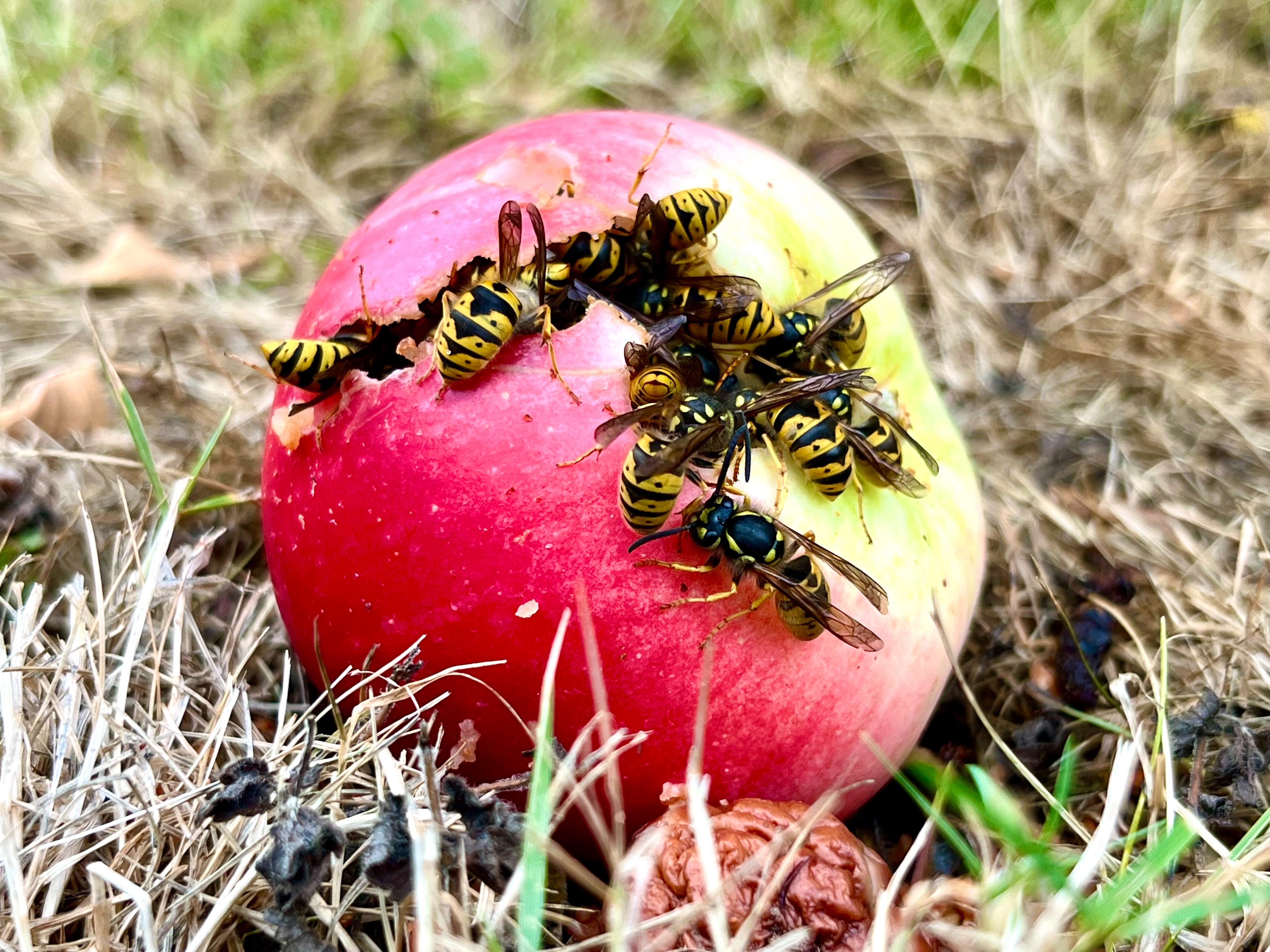Fly, my pretties, fly

Wasps have had bad publicity over the years and with their appetite for our picnics and lovingly nurtured fruits they’re not the first visitor that we like to welcome into our gardens. It seems however that the desire to eradicate them in the past may be misplaced and the role they play is actually of benefit to gardeners.
Many a time we’ve spotted wasps carefully quartering our kale plants, checking the underside of leaves and stems for an unsuspecting caterpillar. Once spotted they prey is grasped and taken away (think flying monkeys, Dorothy, and Toto) before being butchered and fed to the carnivorous larvae back at the nest.
A single nest requires dozens of caterpillars every day to ensure the health of the colony, the result of which inadvertently helps protect our plants from damage and quite often total decimation. Even the damage caused to our fruit is rarely initiated by wasps. Apples are relatively tough skinned and it often takes a punctured skin from windfalls hitting the ground or a peck from a bird before the wasps can gain access to the softer, sweet, flesh underneath.
On balance, we’re on the side of the wasps, although with our ‘Beauty of Bath’ apples we find it’s best to clear up any fallen fruit to ensure we don’t accidentally tread on a feeding frenzy (pictured) as we head for the nearby greenhouse.











